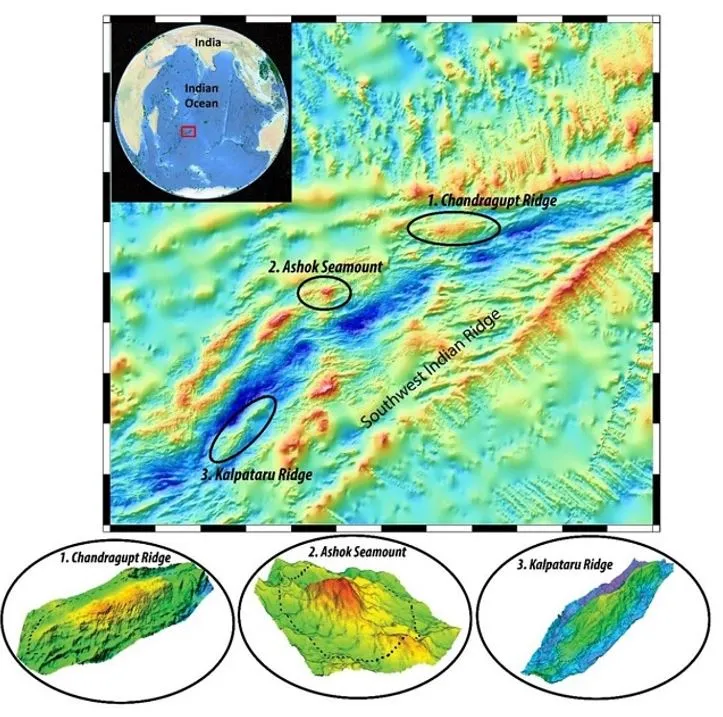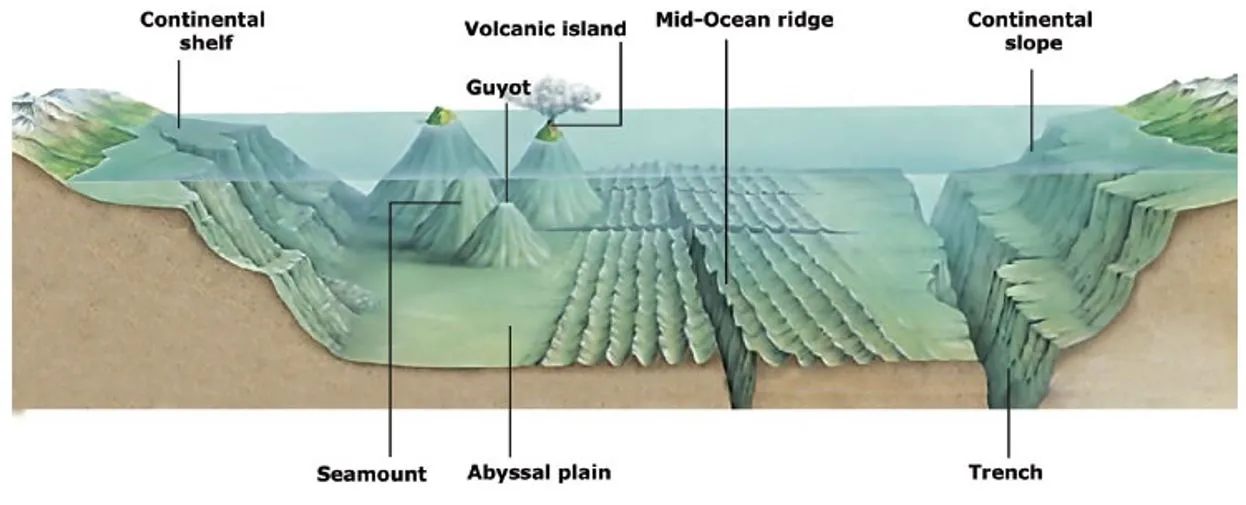

12th August 2024 (13 Topics)
Context
India has recently named three underwater geographical structures in the Indian Ocean. These names were proposed by India and approved by the International Hydrographic Organization (IHO) and UNESCO’s Intergovernmental Oceanographic Commission (IOC).
About the structures
- These structures are named:
- Ashoka Seamount: This was discovered in 2012. This oval-shaped seamount spans approximately 180 sq km and was identified using the Russian vessel Akademik Nikolay Strakhov.
- Chandragupta Ridge: This was also discovered in 2012, this elongated ridge covers 430 sq km. It may play a significant role in supporting marine biodiversity by providing essential habitat and food sources for various species.
- Kalpataru Ridge: This was identified in 2020 by the Indian research vessel MGS Sagar. This elongated ridge spans 675 sq km.
- They were discovered by oceanographers from the National Centre for Polar and Ocean Research (NCPOR) based in Goa.
- These newly named structures are located along the Southwest Indian Ridge area of the Indian Ocean. Their discovery was part of an international survey exploration program.
- With these additions, there are now seven underwater structures in the Indian Ocean that have been named after Indian scientists or proposed by India.

- Previously Named Structures
- Raman Ridge (1992): Discovered in 1951 by a US oil vessel, this ridge is named after physicist and Nobel Laureate Sir CV Raman.
- Panikkar Seamount (1993): Discovered in 1992 by the Indian research vessel Sagar Kanya, this seamount is named after renowned oceanographer NK Panikkar.
- Sagar Kanya Seamount (1991): Named after the research vessel Sagar Kanya, which discovered it during its 22nd cruise in 1986.
- DN Wadia Guyot (1993): Discovered in 1992 by Sagar Kanya, this underwater volcanic mountain (guyot) is named after geologist DN Wadia.
|
Fact Box: International Hydrographic Organization
Intergovernmental Oceanographic Commission
Underwater geographical structures Underwater geographical structures are significant features found on the ocean floor, shaping the seafloor's topography and influencing marine ecosystems. These structures include:
|



